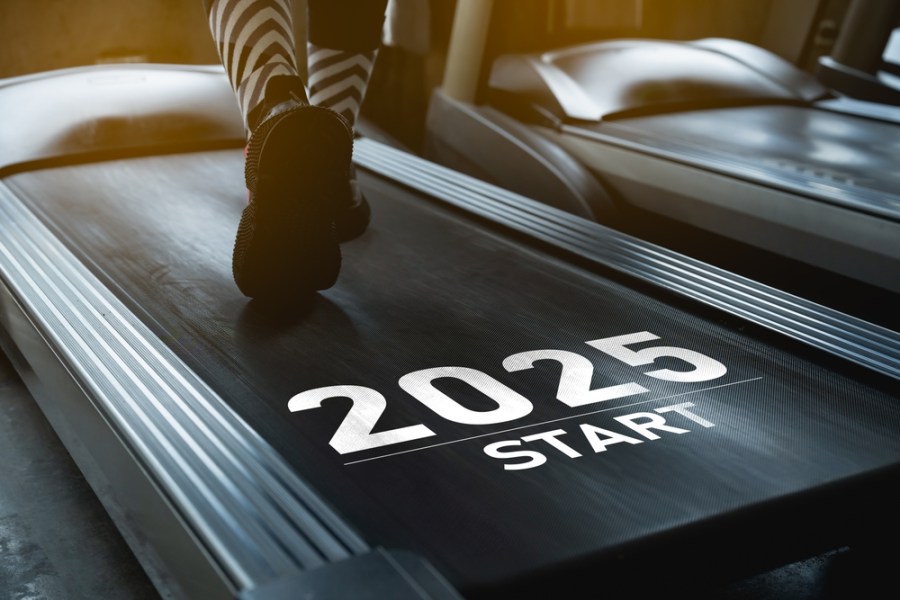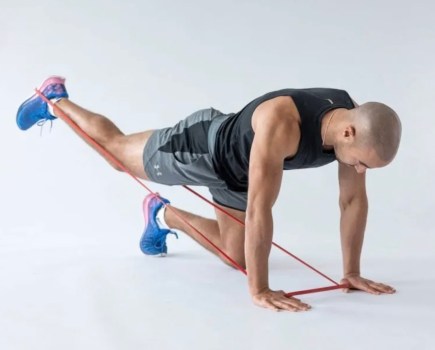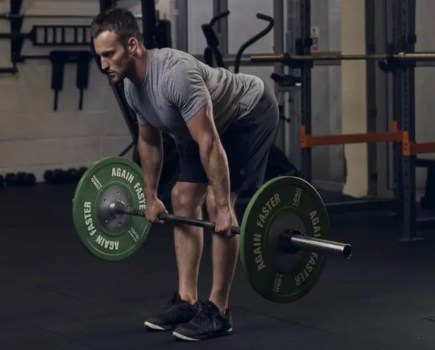Struggling for ideas on how to exercise at home? Here are five great exercises for space-limited individuals
Every winter, we see Google search demand increase for terms relating to working out in smaller spaces. Whether it’s avoiding the gym crowds or saving yourself from having to brace the cold temperatures, it’s clear that many of us want to get our body moving at this time of year – but lots of us would prefer to stay inside while doing it. Damian McClelland, Musculoskeletal Services Clinical Director from Bupa Health Insurance shares five exercises for small spaces to inspire you to still feel the burn this winter, regardless of how compact your home is.
Walking on the spot
Walking on the spot for 30 minutes is a great way to get your heart beating faster and oxygenate your blood and muscles, burning up to 200 calories. Another good thing about this workout is that you can do it in lots of places within your home, whether it’s when you’re sorting out laundry, watching TV or scrolling on your phone – or on a home treadmill.
To get the most of this workout, make sure you wear comfortable shoes that support the inner soles of your feet well, along with breathable clothes. If it’s your first time trying this exercise, slowly build up your speed until you feel comfortable with the movement, bringing it to a quick marching speed, ideally while swinging your arms if it’s safe to do so.
It can be useful to use a step counter to track your count, and challenge yourself to up your steps over time. You could even try wearing a weighted rucksack once you’re feeling confident to add extra challenge to your movement.
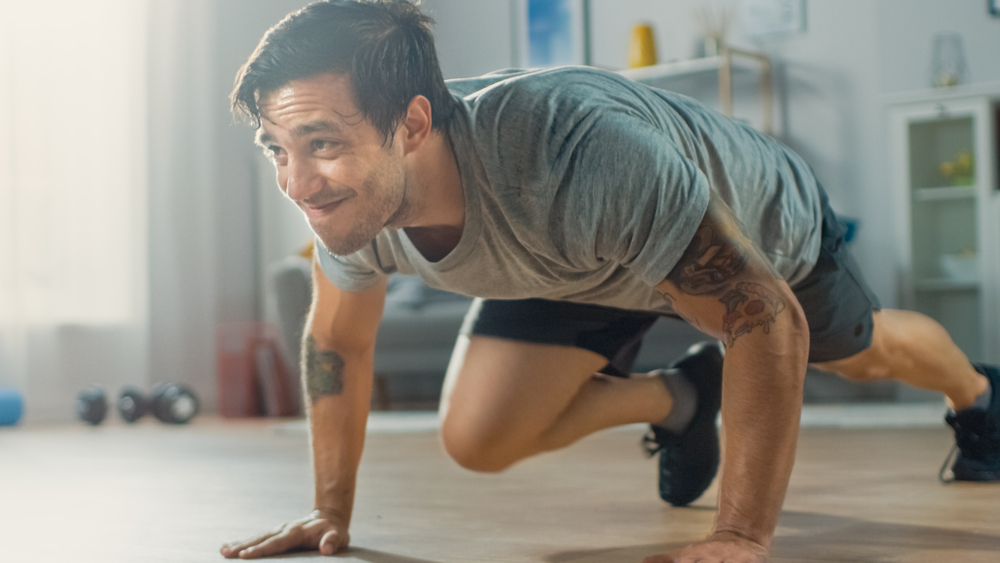
Mountain climbers
All you need is enough space to lie down on your front for this move. This movement works your abdominal region and upper body. Keeping your back straight, hold your bodyweight with flat hands and your toes. Next, drive one of your knees up to your chest, then repeat with the other knee. Complete this repetition for 30 seconds, then rest for 30 seconds and repeat.
Squats
The key to getting the most from this exercise is your form. Make sure you stand with your feet hip-width apart, then imagine that you’re sitting back into a chair until your thighs are parallel with the floor. Be wary of your knee and toe position – move purposefully so your knees don’t knock inwards or exceed your toe line. Use your legs to push yourself back up to a standing position, then do as many as you can over 40 seconds.
You could hold dumbbells or tinned food in each hand – with your palms facing inwards – to increase the resistance during this exercise to help fuel your calorie burn. Why not try doing 10 while waiting for the kettle to boil?
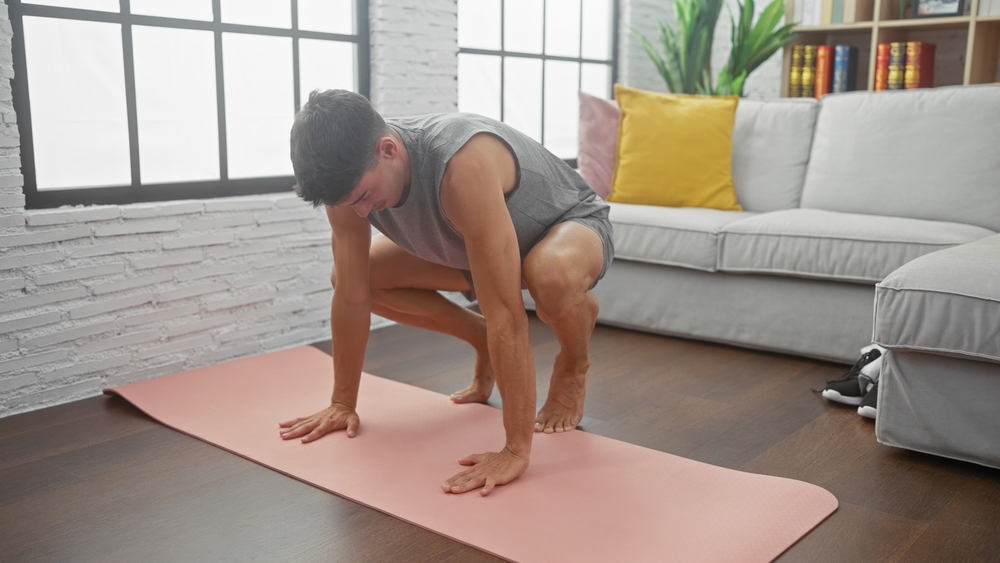
Burpees
Targeting your arms, chest, shoulders, abs, legs, hips and glutes, burpees combine cardio and strength training to create a full body high intensity workout. All you need is enough room to stand, plank and jump.
Start by standing with your feet shoulder-width apart. Keeping your back straight and arms by your side, drop to a squat, then put your hands down in front of your feet. Taking the weight on your hands, kick your legs back to fall into a plank position. Look straight and ahead of you.
With your arms and legs supporting you as you face the floor, bring both of your legs forward together to propel you upwards to jump. Then repeat.
Mat Pilates
Mat Pilates offers a low impact, whole body workout without the need of equipment as you use your own weight to offer resistance. This is another workout where all you need is a little floor space – enough to house the size of a mat that’s long enough to support you lying down.
If you’re a Pilates beginner, it helps to follow a class to get the hang of the basic moves, from the shoulder bridge to the clam.
Damian comments: “It’s important to keep moving at this time of year, even if you’re struggling to find the motivation. Moderate to high intensity exercise is a great way to protect your body against seasonal risks like colds (working out helps keep your immune system strong), and the winter blues, due to exercise’s mood-boosting effects.
“If you’ve not exercised for a while, it can be handy to follow an on-demand session to help reduce the chance of you overdoing it and becoming sore. On-demand classes will usually include a warm-up and cool down to help gently stretch your muscles. Muscle soreness or stiffness a day or two after a workout is normal – and it can affect you even if you’re already fit.”
However, if you’re still feeling sore more than five days after your workout, and you’re experiencing swelling, bruising or tenderness, it could be a sign that you’ve injured yourself. Speak to a health professional to get checked over before carrying on your exercise regime.”

